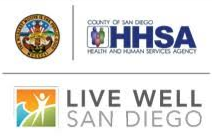Anyone can become addicted to drugs or alcohol and like the complex nature of the disease itself, there are many different aspects that put people at risk. Many of these factors are out of our control. Genetic predisposition, preexisting mental disorders, anxiety, and depression are all common among addicts. There are also environmental risk factors. Physical and sexual abuse, emotional trauma, addiction in family members and friends, and having access to drugs of abuse can be unavoidable in people’s lives. All of these risks are most prominent during adolescence when the brain is still developing.
Genetics is one of the most predictive factors for someone developing a substance abuse disorder. There is no one “addiction gene” but scientists have identified several different genes that contribute to the complex way addiction works on the brain. People can be predisposed to the abuse of specific drugs and addiction in general. Genetic variances that affect the dopamine and reward center in the brain and how a person is able to metabolize different drugs can play a major role in addictive behavior. Using any drug affects dopamine so if someone has a deficit or an overabundance of it, that person will react differently than a normal person would. Genes that are responsible for different neurotransmitters and their receptors can affect someone’s proclivity to abuse specific substances like opiates, marijuana, or stimulants. Abusing drugs changes existing gene expression in parts of the brain and those traits can be passed on and inherited by children.
Genetics and heredity play a big part in determining addiction but because it is such a complicated disease, it is still hard to determine just how much is biological and how much is environmental. There have been many studies done on twins, families, and adopted children to determine how much genetics actually contribute to the risk of substance abuse. Twin studies are particularly intriguing because identical twins have the exact same DNA. Two people who share the same genes give researchers a great control with which to make observations of developmental differences compared to fraternal twins who share only 50% of their DNA. A lot of the results point to biology playing a major role but researchers haven’t been able to completely separate nature from nurture. One of the most interesting and widely referenced studies that I came across in doing my own research was called the Virginia Twin Study. It looked at almost 1,500 pairs of twins (ages 8-16) in that state and found that societal and environmental factors were more important in adolescence for developing addictive behavior but genetics and biology were more of a factor in early adulthood. The most important environmental factor was the availability of drugs of abuse which depended on things like culture, religion, neighborhood, and socioeconomic status.
That study suggests that biological factors taking effect were dependent on the environmental circumstances and having access to drugs. Depression, anxiety, bipolar disorder, and PTSD as a result of traumatic experiences are all common psychiatric conditions among drug addicts. Trauma is defined as something that “causes physical or emotional harm from which you cannot remove yourself”, according to the Substance Abuse and Mental Health Services Administration. Childhood trauma isn’t just a result of abuse, it can happen from neglect, bullying, a car accident, the loss of a parent, or seeing abuse and violence in a household happening to other family members. Children often don’t have the tools with which to process these events and the negative emotional effects can last well into adulthood. Trauma survivors can turn to unhealthy means with which to deal with the resulting pain. Drugs and alcohol are an easy way to numb out feelings through self-medication. The brain gets used to having drugs in the system and creates neural pathways that reinforce drug use.
The rates of different kinds of abuse and trauma are much higher among alcoholics and addicts than they are for the general population. People who suffer from these experiences are much more likely to develop some kind of substance abuse problem. Although the correlation of these psychiatric diagnoses with substance abuse disorders is high, the causality is difficult to pin down. The research points both ways. Childhood trauma will increase the likelihood of drug and alcohol abuse and reports from addicts and alcoholics showed that they have a high rate of past trauma. There are also obstacles to much of the research. Many sexual and physical abuse victims are unwilling or unable to talk about these experiences. Confidentiality laws that protect these victims make more extensive data gathering difficult. While the effects of trauma and abuse are often obvious, it’s not easy to quantify for scientific purposes. There are laws that define them but how they affect different people varies. Another problem cited is that so many different institutions and people are involved in data collection: hospitals, health care professionals, law enforcement, the justice system, social services, and many more; that it is extremely challenging for researchers to come up with hard numbers and a definitive criteria for how the relationship between trauma and addiction works.
There are so many risk factors for addiction and they are all interrelated. Figuring out exactly how relevant any individual one is in comparison to another seems almost impossible. Anyone can become an addict and both genetic and environmental factors are usually involved. Children are the most vulnerable demographic and the availability of drugs may be the most dangerous element when other societal and biological ones are in place. The reason children are at the highest risk is because of the brain’s neuroplasticity. When the adolescent brain is still developing, any kind of trauma and/or drug use is going to be hard-wired into it much more so than it would be with an adult. Biological predisposition is going to take more of an effect as a child moves into the late teens and early adulthood and exacerbate any environmental factors to increase the potential for substance abuse and addiction. Neuroplasticity is a major part of what makes recovery from addiction possible but it also plays a major part in developing a problem early on in life as well.
There is nothing easy about tackling addiction. I’ll use myself as an example. There were not many obvious risk factors in my life. I had a great childhood. I was never abused physically, sexually, or emotionally. There were no drugs in my home and my parents are not alcoholics. We were upper-middle-class and I never wanted for anything. I did well in academics, sports, and music. None of my friends were addicts. I had access to drugs but was never interested as a kid. I got into an Ivy League school and graduated. By all accounts, I had a bright future and low risk.
And yet I’m an addict. I didn’t start binge drinking and using drugs regularly until I was 18 and in college but I found out that I loved to party. When I did start, I went hard in the paint and didn’t stop for another 18 years until the wheels fell off and my life was in shambles. With a lack of environmental risk early in my life, it looks like maybe genetics took over in my early adulthood? I don’t know. My maternal grandfather was a drunk and I had an uncle who was an alcoholic/addict but I don’t know of any other addiction in my family. I had a lot of social anxiety and insecurities growing up but always had a big group of friends. It looks to me like the right combination of internal issues, a love of debauchery, and probably genetics coming together at the right time kicked off my addiction. In adulthood, I did experience trauma and that added fuel to an already brightly burning fire. It’s such a difficult spiral to get out of.
I think that I’m a good example of anyone being able to become an addict. Even though there was a lack of the typical risk factors in my life, it still happened. And there are people out there who had a lot of the risk factors in their lives but never become addicts. A person’s inner strength is hard to measure. The same things that make someone turn to drugs to cope could be the motivation for someone else to persevere and find other ways out of those situations. Life circumstances can portend addiction and increase its likelihood but there are no guarantees either way. Most people who try drugs don’t become addicted but it’s an unknown, it’s still dangerous.
While I will probably never get to the bottom of exactly what caused my addiction, at this point in my life that doesn’t matter that much to me. The best part of my recovery is being able to share from my experience through my writing in the hope that it will help another potential, suffering, or recovering addict.

